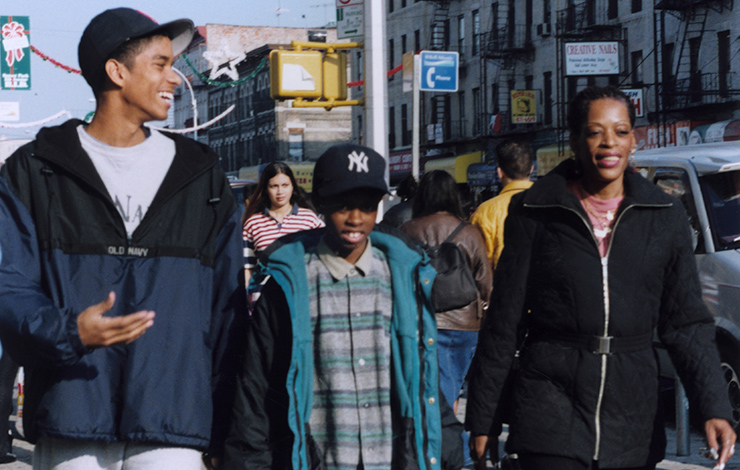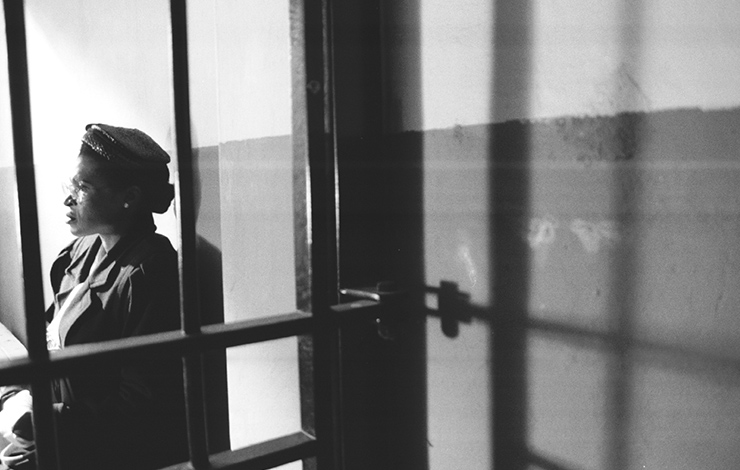
Documentary shorts (40 minutes or less) represent a gem of a genre, yet it is so difficult for them to find their place in the world of American theatrical distribution. Here's the conundrum: documentary shorts are popular with festivals and festival-goers alike, but for these films to travel from the friendly environment of a festival into theaters is, to say the least, a challenging endeavor.
"Shorts are some of the best filmmaking," says Nancy Buirski, executive director of the Full Frame Film Festival in North Carolina (www.fullframe.org). She explains that people tend to take more risks in making shorts, that shorts reflect a more personal brand of filmmaking.
Buirski further maintains that it is more difficult for theaters to market shorts than it is for festivals, since many of these films are typically made by first-time filmmakers.
But there is an untapped market for them, and one person who recognizes this more than anyone is Carol Crowe, founder of the Los Angeles-based Apollo Cinema (www.Apollo.com). An international distributor of short films of all types, Apollo Cinema is currently overseeing a theatrical run of the Oscar-nominated live action and animated shorts in selected cities across the US.
"Everyone that's booked our Oscar-nominated live action/animated shorts asks, 'What about the Oscar-nominated documentary shorts?'" says Crowe. "There's definitely an audience out there wondering where they can see them." Although those doc shorts screened as part of IDA's DocuDay, a day-long screening of the Oscar-nominated docs, earlier this year, they did not have an extensive theatrical run.
Crowe points out that this genre is made primarily by independent filmmakers who work on a shoestring budget. Making the leap from festivals to theatrical entails two major expenses: rights and clearances and a film print—preferably 35mm, but at least 16mm.

"Most people who create shorts don't think the film is ever going anywhere, so they cut costs where they can—in rights and clearances," Buirski notes. "Most filmmakers only clear rights for festivals, and this is very minimal; they haven't cleared rights on the possibility of theatrical distribution."
Regarding film prints, Crowe notes that movie theaters generally screen on film, although things are changing with regard to digital cinema. This means that filmmakers must supply a film print, which is a hefty cost. To further complicate matters, while it is possible to screen 16 or 35mm film, most theaters can't screen the former because they no longer have 16mm projectors. Furthermore, those theaters that do have 16mm capability don't like to screen the format because they can't put both 16mm and 35mm prints on a single reel, which makes it difficult to screen a compilation of films.
And there's always the question of marketing; since shorts rarely make money, theaters are hesitant to program them. So, the key is to find creative ways to market shorts. One approach is to package them around a certain theme. "Bagels and Docs," a collection of Jewish-themed documentaries—both short and feature length—has been screening at the Laemmle Theatre in Los Angeles.
Another strategy is to pair a short with a feature-length doc that has a similar theme. Bobby Hudson, one of the producers/directors of the Oscar-nominated Mighty Times: The Story of Rosa Parks, explains that Joan Sekler, one of the makers of Unprecedented (about the 2000 presidential election), approached him about pairing his film with hers. Houston maintains that he would not have pursued theatrical distribution otherwise.

A major incentive to secure theatrical release is to qualify for Academy Award consideration. For makers of documentary shorts, this has been a bumpy road. On two occasions in the 1990s, the Board of Governors of the Academy of Motion Picture Arts and Sciences considered eliminating the documentary short category. But thanks to sustained campaigns from the filmmaking community, the category was saved.
With the category in place for now, the rules for both short and feature-length documentaries to qualify for Academy Award consideration have changed, as of the academy's December 2002 announcement. Frieda Lee Mock, a governor on the academy's Documentary Branch, explains that the academy wants to promote genuine theatrical releases of doc shorts. So, in addition to shorts qualifying for consideration through a competitive festival designated by the academy, shorts must screen for a week in either Los Angeles County and in the Borough of Manhattan in New York City and must screen for at least two days in four additional cities. If this requirement cannot be met, and the film is nominated, then it must be withheld from television and Internet transmission for the nine months following the day nominations are announced in January 2004 for the 2003 Awards year. For full details about the new rules, check the Academy's website (www.oscars.org).
The new rules will surely encumber the filmmaker who wants to qualify a short work for Oscar consideration. But two venues that have been helping to ameliorate the challenges have been the Laemmle Theatres (www.laemmle.com) and IDA's InFACT Theatrical Documentary Showcase (now DocuWeek).
"For a short filmmaker, to get the nomination is huge," says Laura Thielen, executive director of the Aspen Shorts Film Festival. "It's a huge morale booster and a real acknowledgment of the art and craft of filmmaking." For Alice Elliot, the nomination of The Collector of Bedford Street dramatically increased the exposure of her film and prospects for her future projects. Another Oscar nominee, Roger Weissberg, who with Murray Nossel made Why Can't We Be a Family Again?, did a few additional screenings of that film, but didn't have the capacity to launch a theatrical release.
Thielen notes, "I do think that unless a filmmaker is extremely resourceful, managing theatrical distribution along with everything else is a huge deal." She suggests that if you have a film that resonates with festival juries and audiences, contact some of the smaller distributors and pitch the film to see if it will complement another film.
If anyone can empathize with the plight of the maker of doc shorts, it's Jay Rosenblatt. As one whose métier is short films, he confirms that, "You can't make a living doing theatrical shorts." Rosenblatt has had retrospectives of his work, and his short The Smell of Burning Ants paired with Arthur Dong's License to Kill for a theatrical run. He considers self-distribution the best way to get your film out. "You will do much more for your film than anyone else will," he maintains.
Other options that he suggests to consider include packaging a collection of your own shorts or with those of other makers around a specific theme, or, as others have suggested, linking your short with a feature. "With the right kind of buzz campaign, it's possible to make shorts compilation sound really cool, but it would take a lot of work," Buirski acknowledges.
Feature-length documentaries are in the middle of a sort of heyday that no one could easily have predicted. Filmmakers, distributors and theaters that are willing to put in the time, energy and risk could help short docs reach that popularity as well.
Laura Almo is a documentary filmmaker and writer based in Los Angeles. She is working on a project about Spain's reconsideration of the Spanish Civil War.
